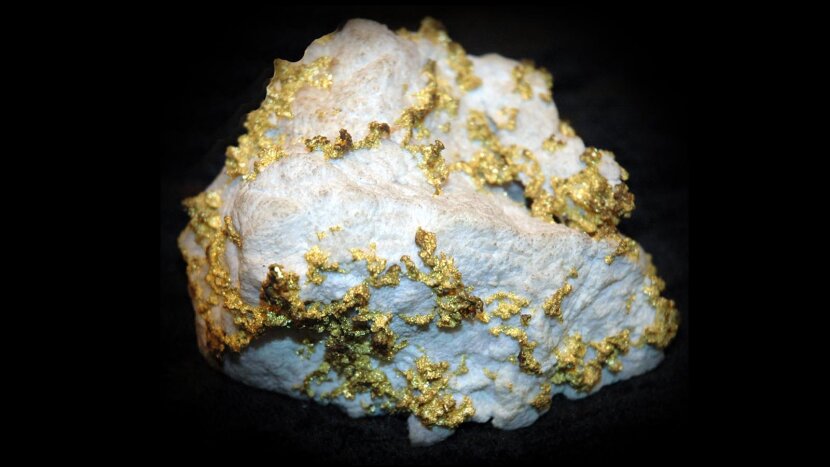 .............................................................................................................................................
.............................................................................................................................................
What's the Difference Between Pyrite and Gold?
BY MARK MANCINI
Martin Frobisher thought
he'd hit the jackpot.
The year 1576
found this English explorer and legal pirate — he was sanctioned by the crown
to plunder enemy treasure ships — seeking the Northwest Passage, the
undiscovered Arctic sea route that
links the Atlantic and Pacific oceans.
He found something
else instead — Labrador, Canada, and what is now Frobisher Bay.
But weeks
later he sailed west and reached icy Baffin Island, where he
gathered a mineral sample that seemed to be flaked with gold. But it wasn't.
Not according
to the Royal Assayer who identified the shiny bits as pyrite, also known as
"fool's gold."
Undeterred,
Queen Elizabeth's merchants sent Frobisher back to Baffin, where he gathered
and shipped 1,400 tons (1,270 metric tons) of ore.
Most of it
was worthless;
in a few tested samples, the gold content was only five to 14 parts per
billion.
Though he
longed to abandon Baffin and go exploring again, Frobisher spent years
fruitlessly hunting Arctic treasure. And it was all because of that pyrite.
Elements and Compounds
Captain Christopher
Newport could likely sympathize.
As the leader
of Jamestown, England's first permanent settlement in North America, he was
constantly getting tricked by New World "gold" that turned out to be
— you guessed it — pyrite.
So, let's say
you're a prospector, or maybe just a bright-eyed field geologist. How do you
avoid pyrite's trickery?
Before we get
into that, it might be a good idea to explain what pyrite actually is in
the first place.
Real gold is
a chemical element,
a substance no ordinary chemical process — like electrolysis or heating — can
break down.
If you've got
a classroom periodic table handy,
look for gold between platinum and mercury.
Gold's
chemical symbol is "Au" (derived from the element's Latin-language
name, "aurum").
A fun way to
remember this is to say to yourself, "A! U! Give me back my gold!"
For maximum
entertainment value, use a Brooklyn accent.
Pyrite is
different. Unlike gold, it's a compound made up of two different elements: iron
and sulfur.
That's why
it's often referred to by the name "iron sulfide."
Scientists write
out pyrite's chemical formula as "FeS2."
You see, iron
and sulfur's chemical symbols are, "Fe" and "S,"
respectively. And each pyrite molecule contains one iron atom along with two
sulfur atoms.
Playing Rough
Telling gold
and pyrite apart really isn't that difficult if you know what you're doing.
Ever watch the
Olympics? Then you'll probably know those world-class athletes love to bite
their gold medals in
front of the cameras. (Seriously, it happens a lot.)
The practice
comes from the old belief that one can bite gold coins to see if they're
counterfeit.
Supposedly,
nibbling on any coin with a high gold content leaves bite marks behind.
The
truth's more complicated,
though, but the custom has a basis in fact.
On the Mohs' scale,
which rates the hardness of gems and minerals, gold has a ranking of 2.5 to 3. As elements go, it's
rather soft so a gold nugget can easily be scratched with a pocket knife.
Pyrite has the
advantage here; it's a bit harder and comes in at 6 to 6.5 on the Mohs' scale. Forget
knives; you'd need a high-quality metal file to
scratch this stuff.
Steel hammers
are another tool that can give the game away. Hit some pyrite with one of these
beauties and it'll send sparks flying.
If you're
persistent enough, the pyrite will shatter and eventually get reduced to a
powder.
None of that
happens when you strike gold with a hammer: No sparks, no powder.
Instead, you
might just end up expanding or
flattening the sample. Not only is gold soft, it's malleable to
boot.
See How I Glitter
Visually, both
materials are yellowish, but gold is less brassy in hue. It also doesn't form
cube-shaped crystals, as pyrite often does.
On the
contrary, most of the gold encountered in the field takes the form of
either flakes or lumpy
nuggets.
Gold also will
leave a yellow streak behind if it's rubbed against a bit of porcelain or white
ceramic tile.
Repeat this
same experiment with pyrite and it will leave a darker, greenish-black line.
If you're
still in doubt, the nose knows. Although gold is pretty much odorless, pyrite
has a faint smell — and it smells like rotten eggs. (Again, it's loaded with
sulfur.)
But where
things can get confusing is gold and pyrite sometimes turn up in the same deposits.
Remember,
Frobisher's ore did contain some genuine gold — albeit a teeny, tiny amount.
If
"real" gold keeps eluding you, don't despair.
Fool's gold
isn't completely useless. Like we already mentioned, it can be used to produce
sparks, and thereby start
fires.
That made
pyrite a valuable commodity in ancient and prehistoric societies. Indeed, the
word "pyrite" itself came from a Greek term for "firestone."
Tomorrow may
bring a new appreciation for iron sulfide.
In 2020,
scientists at the University of Minnesota used electric voltage and an ionic
solution to successfully turn pyrite into a magnetic
material.
This
breakthrough could lead to low-cost, sulfur-based solar cells down the road —
giving fool's gold a bright future in the green energy industry.
NOW THAT'S INTERESTING
He never found
the Northwest Passage, but Martin Frobisher was knighted in 1588 for fighting
the Spanish Armada
Mark
Mancini
is a freelance writer currently based in New Jersey. Over the years, he’s
covered every subject from classic horror movies to Abe Lincoln's favorite
jokes. He is particularly fond of paleontology and has been reporting on new
developments in this field since 2013. When Mark's not at his writing desk, you
can usually find him on stage somewhere because he loves to get involved with
community theater. And if you ever feel like trading puns for a few hours, he's
your guy.



No comments:
Post a Comment